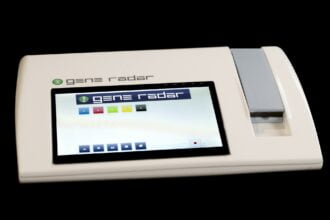Dementia can make day to day tasks very difficult for individuals suffering from it. While the cure for dementia is still not found, technological innovations can surely make the life of dementia patients easier. There are quite a few innovations which can help them combat dementia and also lead an almost normal life.
These technological aids aim to reduce anxiety and help them deal with day-to-day problems. We will today share with you 7 Technological Innovations for Those With Dementia.
- Special clocks
often find it difficult to decipher between day and night. They do not remember whether it is day or night. The clocks designed explicitly for them help them not only interpret the time but the occurrence of night and day. These clocks also help them follow a proper routine and a timetable.
The clocks might not be a technological breakthrough, but they can certainly help patients suffering from dementia to follow a routine life.
- Communication Aids
Dementia results in reduced memory. That is why; it is not that easy to communicate with someone. The patients who have dementia cannot recall the last conversation, but they surely can remember the emotion associated through that interaction. That is why; there are technological aids these days which help them stay in contact with their loved ones.
The adapted telephones come pre-programmed with the numbers of their loved ones. The buttons are large and often display the images of their loved ones. It makes it easier for them to communicate with their loved ones. Moreover, with the help of video calling, they can directly view the person on the other end which helps them interact in a much better way. There are applications like Talking Mats which help them communicate with the help of symbols and pictures. Thus, the communication aids available for people who have dementia are plenty.
The project coordinator at FirstCare, Jane Byrne, has mentioned that there are several causes of dementia. The most common is Alzheimer’s, though the symptoms of dementia can also be caused by strokes, known as vascular dementia.
- Supervising the use of electrical appliances
Many times, dementia patients live alone. Their loved ones often worry about them. Nowadays, there are power strips available which can monitor their electrical appliance use. The caregivers can remotely track the use of these electrical appliances. It will help them keep a check on the day-to-day activity of their loved ones. With the remote monitoring, they can now know right away when something is out of the ordinary. For example, if the microwave or the induction cooktop hasn?t been turned on for a day, it likely indicates that they did not cook the food. In such a case, caregivers can easily make other arrangements.
These power strips are not only suitable for their loved ones but also for their caregivers to help the patients.
- GPS tracking devices
GPS tracking devices might be the simplest gadgets for dementia patients but are quite useful. It is often that a dementia patient forgets his or her way to their home. At such times, they do not even remember whom to call. However, if they have a GPS tracking device, the caregivers or their loved ones can easily track them. It ensures that they can monitor the patient at all times.
GPS tracking devices are often small in size. Patients can wear them. It helps to monitor the movement of the patients.
- Home care robots
Home care robots can reduce the work burden for dementia patients
. They can quickly clean the entire home. Moreover, they can alert the patient regarding medication routines. They can set up reminders as well. It means that home care robots can work as their memory. Once a caregiver or a loved one feeds a proper schedule in the home care robot, they will follow it day in and day out which will help the patients suffering from dementia.
The home care robots can maintain proper clean conditions in the home which will reduce the workload on the patient. Whichever way you look at it, the home care robots can help the patients in more ways than one. The home care robots are evolving at a rapid pace which ensures that the patients do not have to worry about charging them. They will charge themselves when the battery is low and automatically resumes the operation when recharged. Thus, there is no intervention required on the part of the patient to operate these home care robots.
- Home monitoring devices
These days, refrigerators, microwave ovens, laptops and even smart thermostats all come with the camera. These devices can not only form a network of their own but can also help you monitor the patients. It will ensure that you can supervise over them using the smartphone. You can easily communicate with the patient through any of these devices as they have webcams and microphones.
You can connect all these devices with smart digital assistants like Alexa that will help you communicate with the patient quite easily. It can be quite stressful when you can?t get hold of the loved one who has dementia. However, with the help of these home monitoring devices, you can get in touch with them in no time. It will help you ensure that they are safe.
- In-Home cameras
If you do not have smart gadgets in your home, you can easily install conventional cameras. These are very affordable. 2-way cameras can help you communicate with the patient. When you?re trying to remind them about their medication or the task at hand, you can do so with the help of In-Home cameras.
Even if you do not want to communicate with them, you can use regular cameras to monitor their movement. It will make it easy to track them throughout the home. There are motion control cameras as well which will alert you automatically when they reach that part of the house. Using these cameras, you can even build a safe perimeter in your home. In case, the patient moves beyond that perimeter; you will get alerts with the help of the camera. The ways to use these in-home cameras are plenty. You can even integrate them with the digital assistants to make them more efficient.
Conclusion
So, while the cure for dementia is absent, with the help of technology, the life of such patients can be made easier. Also, the technological aids which we highlighted above are readily available. You will not have to spend a significant amount of money to buy them or install them. It will not only make the life of the patient easy but their loved ones as well. The loved ones can monitor the patient throughout and rest assured of their health and well-being.








